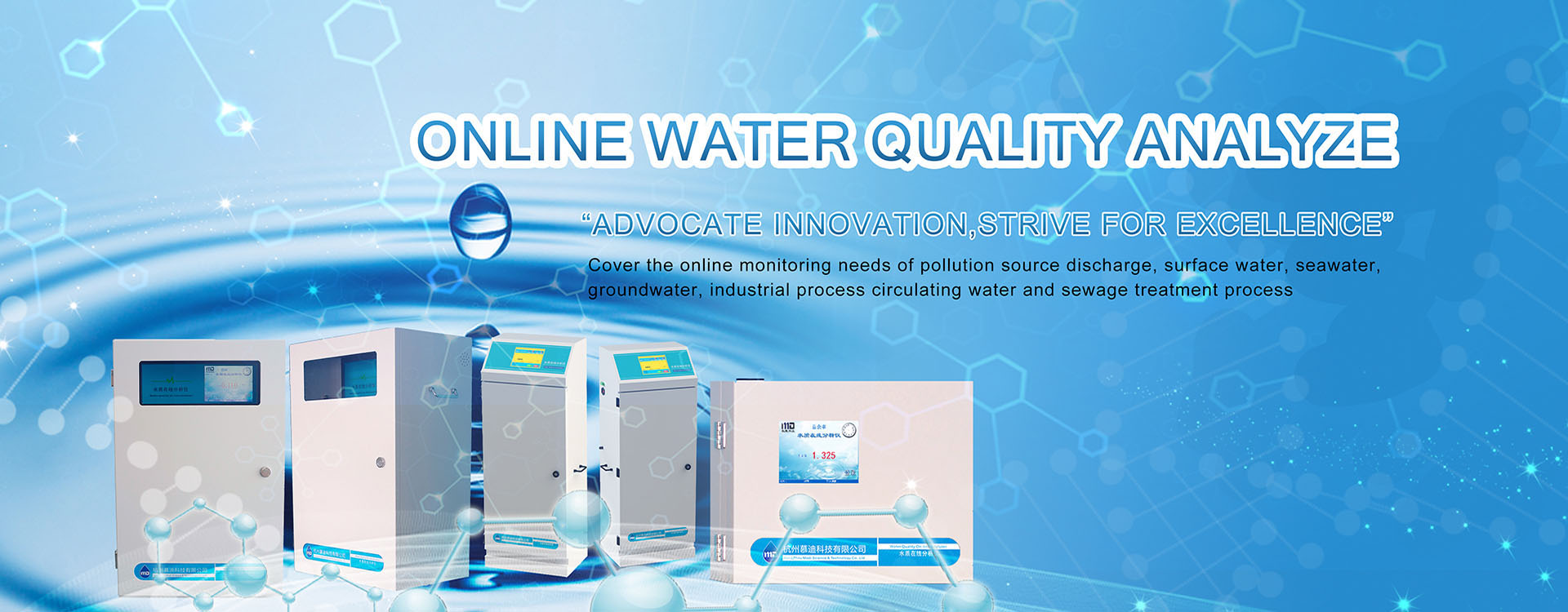The heavy metal “chromium” is present in various organs of the human body and is an essential trace element. Is it possible to eliminate the need for online monitoring of water quality containing chromium? Of course not! Just like in our daily lives, many things (especially what we eat) are good in moderation. Once overloaded, it can be harmful to the body. The same goes for chromium, excessive amounts are also harmful to the body. So what we need to do is to grasp the chromium content in wastewater, ensuring that it does not harm the ecological environment and ecological health!
The chromium in the wastewater mainly refers to hexavalent chromium and trivalent chromium, with a wide range of sources. The chromium in wastewater mainly comes from heavy metal enterprises such as tanneries, electroplating plants, and smelters. During monitoring, hexavalent chromium and trivalent chromium can be monitored. As for the problems encountered in monitoring chromium in wastewater, the following are some:
1.Chromaticity
At present, the online monitoring technology for hexavalent chromium and total chromium (total chromium online analyzer) developed by domestic enterprises is mainly based on two standards: “Determination of total chromium in water quality” (GB/T7466-1987) and “Determination of hexavalent chromium in water quality – C13H14N4O spectrophotometric method” (GB/T7467-1987), and the instrument is designed and produced according to different usage characteristics.
So the above two methods are mainly based on spectrophotometry, using C13H14N4O and hexavalent chromium ions (total chromium is oxidized to hexavalent chromium using strong oxidants such as potassium permanganate) to form a purple red complex, which is determined by spectrophotometry at 540nm. The spectrophotometry method is based on the Lambert Beer law and calculates the transmittance of incident light, so the chromaticity of the experimental sample has a significant impact on the experimental results.
2.The influence of oxidants on test results
There is an efficiency issue in using oxidants to convert trivalent chromium into hexavalent chromium in wastewater, that is, there is a certain difference in the conversion rate of trivalent chromium among different oxidants. During the experiment, potassium permanganate, potassium perH2SO4, or hydrogen peroxide were mainly used to oxidize trivalent chromium in the wastewater to hexavalent chromium, and then reacted with the color reagent C13H14N4O for color development. The oxidation efficiency of the oxidant determines the accuracy of the test results. Potassium permanganate, potassium perH2SO4, and hydrogen peroxide are all unstable. Potassium permanganate is prone to oxidation and generates manganese dioxide precipitates, while potassium perH2SO4 and hydrogen peroxide are prone to decomposition. On the other hand, reducing substances in water (such as divalent iron, trivalent iron, etc.) also consume oxidants. Precipitation, decomposition, and reaction with other reducing agents can all reduce the concentration of oxidants, affecting the effectiveness of oxidation, reducing conversion rates, and resulting in lower test results for total chromium. When monitoring hexavalent chromium online, it is necessary to monitor the concentration of oxidants at all times and supplement them in a timely manner. Conditional enterprises can install refrigeration devices to reduce the impact of temperature on oxidants and ensure their oxidation efficiency. At the same time, compare with manual analysis, calibrate the concentration of oxidants used, and ensure a high conversion rate of trivalent chromium.
3.Stability of C13H14N4O
In the process of determining hexavalent chromium, C13H14N4O is almost a special chromogenic agent, but its enhanced photosensitivity also affects the accuracy of the measurement results. When exposed to light, the color gradually darkens, leading to higher measurement results. However, GB/T7467-1987, HJ609-2011, and HJ798-20l6 do not specify the storage time of color reagents, only stating that they cannot be used after the color has darkened, which poses difficulties in manually determining the stability and service life of color reagents. Diphenylcarbamoyl – J~# is prone to oxidation in air and turns red. The oxidation rate in solution is higher than that in solid, making it more prone to oxidation to brown. This requires certain anti oxidation measures to improve its stability during preparation. Wang Hui et al. [7] i) attempted to determine the stability of C13H14N4O chromogenic agent used for hexavalent chromium, and found that the color would darken after one week, making it unusable. By adding an appropriate amount (100mL in a 250mL volumetric flask) of acetic acid or ethyl acetate as a stabilizer, the stability of the colorant is greatly improved. During online monitoring, the above-mentioned reagents can be added to the color reagent to improve the stability of C13H14N4O color reagent.
4.Other factors
In addition to the main influencing factors mentioned above, temperature, acidity, memory effect, humidity, etc. will all have an impact on the test results.
4.1 Temperature
The colorimetric temperature for C13H14N4O spectrophotometry is 15. C. The color can reach stability within 5-15 minutes. The temperature difference between the north and south is significant, and the impact of temperature on color rendering needs to be considered. If conditions permit, temperature control equipment can be installed to ensure the smooth completion of the color reaction.
4.2 Acidity
The colorimetric acidity of the reaction between hexavalent chromium and C13H14N4O is generally controlled between 0.05-0.3mol/L (as shown in H2sO4), and the colorimetric effect is good at 0.2mol/L. After the chromophore combines with hexavalent chromium, it can fully color and reach the colorimetric state. The wastewater generated during processes such as acid washing and electroplating is generally acidic, so it is necessary to use regulators to adjust the pH to ensure normal coloring.
4.3 Memory effect
Memory effect is an important influencing factor in the process of spectrophotometry testing, especially after measuring high concentration samples. If low concentration samples are directly tested, the memory effect of the instrument will significantly increase the test results of low concentration samples. At present, there is no good method to eliminate the memory effect of online monitoring equipment. In daily wastewater treatment, setting up a regulating tank can ensure the uniformity of effluent quality as much as possible, thereby reducing the impact of memory effect on test results.
4.4 Humidity
The humidity of the environment in which the online monitoring equipment is located has a certain impact on the stability of the online equipment. HJ609-2011 and HJ798-2016 both require a relative humidity of 65% and 20% in the environment. If it is too low or too high, it will affect the stability of the instrument, especially during the rainy season in southern China. Excessive indoor humidity can have an impact on the optical components used in spectrophotometry. During use, silicone bags can be placed in the light area for moisture-proof purposes and replaced regularly to ensure humidity in the instrument’s light area and reduce the impact of humidity on test results.




